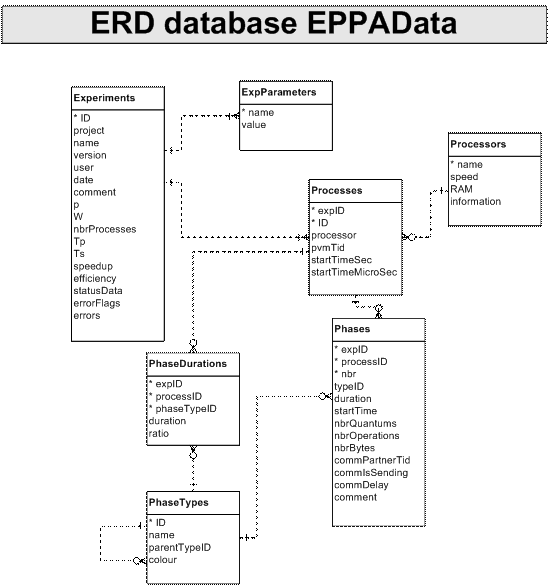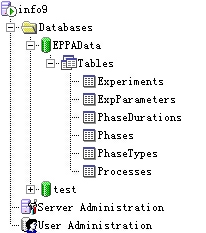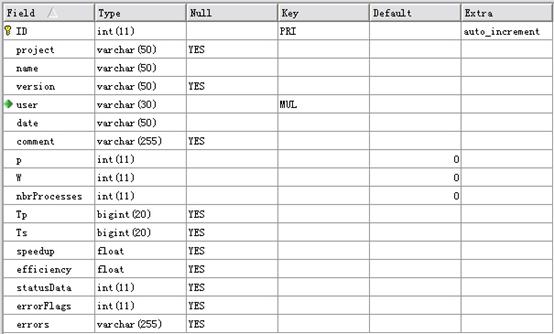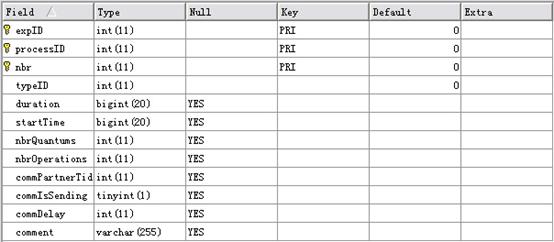Database Definition
• ERD database EPPAData Infrastructure
• MySQL database overview
According to the ERD Database Diagram, totally six tables are needed which are named as Experiments, ExpParameters, PhaseDurations, Phases, PhaseTypes and Processes.
• Table Experiments
There are 16 fields in the table Experiments . This table will be used everywhere in EPPA. See the Figure above. “project” is the field used to record the information about the current project, given a string of 50 characters. “name” is the experiment name, e.g. “pvm example”, “MatrixMult_Cannon”… “user” is the field used to record the experimentalist. “date” is apparent the date and time of the experiment. “comment” is the field used to record the additional information corresponding to the experiment. “p” is the number of processors. “W” is the problem size. “nbrProcesses” is the number of processes. “Tp” is the parallel run time. “Ts ” is the sequential run time. “speedup” is the division of Ts by Tp. “efficiency” is the division of speedup by p.
• Table PhaseDurations
There are 5 fields in the table PhaseDurations . These data will be used in the view of “Overhead” (processID > -1 ) and “Performance” ( processID = -1 ) in EPPA. See the Figure above. “expID” is the experiment ID. “processID” is a number to identify the process. Normally “-1” stands for the general situation. “0” stands for the Master. “1” stands for the Slave 1. “2” stands for the Slave 2. But the latest version of the EPPAData had exchanged the processID with pvmTID in the Table Processes. So we uses pvmTID to identify the processes. “phaseTypeID” is a number to identify which phase type is ? Normally “2” stands for idling. “3” stands for work. “5” stands for communication send. “6” stands for communication receive. “7” stands for partition. “8” stands for synchronization. “11” stands for begin. “12” stands for end.
• Table Phases
There are 12 fields in the table Phases. These data will be used in the view of “Execution” in EPPA. “ expID ” and “ processID ” are the same as the ones in Table PhaseDurations “ nbr ” indicates the sequence of the phases of the same expID. “ typeID ” is just the “ PhaseTypeID ” in the previous table. “ commPartnerTid ” means the communication partner ID. “ commIsSending ” is actually a Boolean value, which gives the sign whether communication send will happen during the current phase. “1” stands for affirmative and “0” for negative. “ commDelay ” is the field used to record the period of delay.
• Table Processes
“ expID ” is the same as the one in Table PhaseDurations “ ID ” in fact is the “ processID” in Table PhaseDurations “ processor ” is the name of the processor. E.g. “nfo9.vub.ac.be” “ pvmTid ” is the number given by pvm. (In order to know more about pvm, please visit the following address: http://parallel.vub.ac.be/documentation/pvm/index.html )
• Table ExpParameters
• Table PhaseTypes
|








